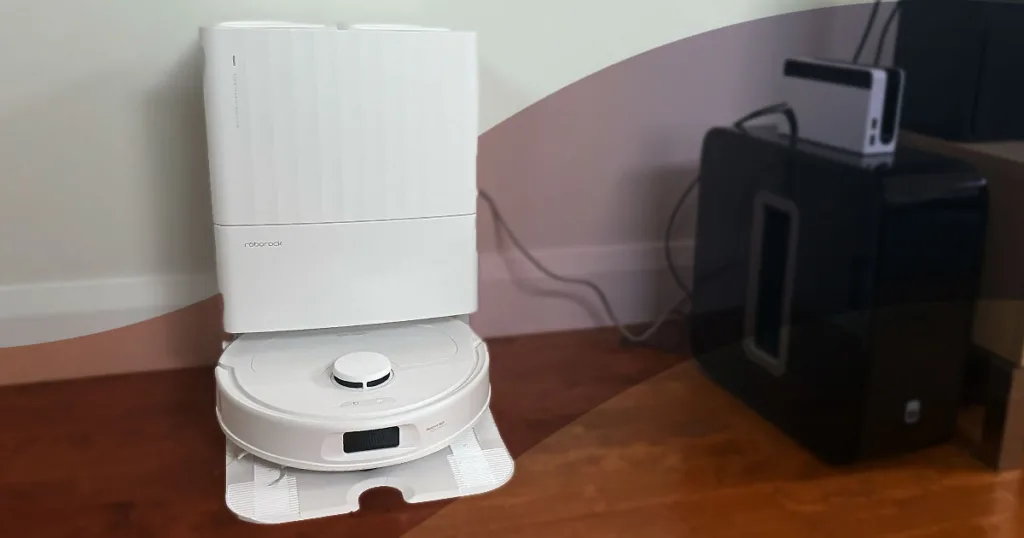Apple made the baseline MacBook Pro better and cheaper.
MacBook Pro M4 (2024) review: Best and less
With every recent MacBook Pro refresh, there are bold performance claims, questionable graphs, and big numbers. This makes sense given their "Pro" nature, but this year, it distracts from a simpler message.
The base MacBook Pro M4 is the best it's ever been. You don't miss out on features or ports because you didn't opt for an M4 Pro or M4 Max. It has a ludicrous battery. And it has more storage and memory at a cheaper price than last year's equivalent. You're getting a better laptop for less money.

For this review, I looked at the entry-level M4 MacBook Pro kitted out with 16GB of RAM (the standard on the Apple's base configuration), 1TB of storage, and an optional nano-texture display.
The immediate feature worth mentioning is the 16GB of RAM as a standard. We've been encouraging anyone buying an M-series Mac to opt for at least 16GB for as long as M-series Macs have been available, so it's great to see it now be the norm.
In our testing, we found 8GB models could experience slowdown every now and again - even from having a few too many tabs open in Chrome. This hasn't been the case with 16GB models, and hasn't been an issue with the M4 MacBook Pro.
Apple has also increased the entry-level storage to 512GB, which is a bit more fitting for a computer with Pro in its name. Despite these spec bumps, the M4 MacBook Pro is $200 cheaper than last year's entry-level MacBook Pro with M3.
You'll pay a minimum of $2,499 for the MacBook Pro with M4. Doubling storage to 1TB will cost you an extra $300, while opting for the nano-texture display will cost you a further $230. This puts the value of my review unit at $3,029.
A maxed out MacBook Pro with M4 will set you back $4,299 with 32GB of RAM, 2TB of storage, and the nano-texture display.
As with every other M-series MacBook, the latest generation aren't upgradeable after purchase. You'll want to order a variant with enough RAM and storage for your future needs. For many, I think the entry-level model will do the trick.

The M4 MacBook Pro has a few other welcome features it's pipped from more expensive models.
To start, there's an extra Thunderbolt 4 USB-C port; you get three rather than the two on last year's models. That's on top of the MagSafe charging port, HDMI, and an SD card reader. Three USB-C ports gives you a bit more flexibility than just two, and it's nice that you don't need to opt for a more expensive model to get that.
The MacBook Pro with M4 also has proper external dual display support. Last year's entry-level model was able to power two external monitors, but only with the lid closed. This year you can keep the lid open while using two external screens. Once again, this used to be a feature that was exclusive to more expensive models.
One more superficial change is the entry-level MacBook Pro is available in "space black", just like the more expensive variants. Last year the entry-level model missed out on the new finish, with buyers able to choose between silver and a lighter "space grey" instead.
I quite like the space black finish, but fingerprints are a little more noticeable than on the silver model. This does tend to be the case with darker finishes, however.
One thing that hasn't changed is the entry-level MacBook Pro is only available in 14-inch. If you want a 16-inch laptop, you're going to need to spend a minimum of $3,999 on the 16-inch model with M4 Pro. At the least there's always the 15-inch MacBook Air for who want a larger laptop without spending almost four grand.
There's also one other omission worth noting: M4 Pro and M4 Max MacBook Pro models have faster ports based on the Thunderbolt 5 standard. This allows transfer speeds of up to 120Gbps. Thunderbolt 4 is limited to 40Gbps, which is still very fast. This should matter to very few users.
There are also a few new features introduced across the entire 2024 MacBook Pro range.
Display upgrades are the most significant, with a higher peak brightness when outside. While far from essential, it's sure to be welcome by anyone who likes to do a bit of work from the park, their yard, or balcony.
There's also the aforementioned optional nano-texture coating which helps reduce glare and reflections. For example, while you tend you see yourself mirrored back on a standard display - at least if it's dark enough - this is non-existent on a nano-texture screen. The $230 upsell is far from essential, but it does make an already lovely screen that little bit nicer.
The display is still a 120Hz ProMotion panel, which allows for smoother motion.
Apple has also upgraded the MacBook Pro's webcam to a 12MP lens. On top of improved quality, it now has center stage, which crops the camera to keep you in the shot, as well as desk view, which can be used be used to show what's on your desk.

The MacBook Pro with M4 battery is excellent. Apple says you can expect up to 16 hours of web browsing time, or up to 24 hours of video streaming. Those are some of the best battery figures Apple has touted with a MacBook. The 16-inch MacBook Pro with M4 Pro is the only laptop in Apple's range that looks better on paper. It has the same 24 hours of video streaming, but up to 17 hours of web browsing time.
In practice, the M4 MacBook Pro battery isn't going to let you down. You'll easily get a full work day per charge. In my testing, I was able to get over 14 hours of mixed usage before I needed to top up. That's excellent.
Performance is also great. Apple's entry-level M4 chip might not sound as flash as the M4 Pro or M4 Max variants, but it will be more than enough for the vast majority of users. Obviously opting for an M4 Pro or M4 Max variant can speed up more demanding creative tasks like video editing or motion graphics, but you're not going to have issues with those workflows on the standard M4.

It's worth touching on Apple Intelligence as it features so heavily for the new MacBook Pro range. The first thing to note is that it won't be available until December. You can swap to US English if you want to use the first raft of features immediately, or install a public beta of macOS 15.2.
Initial features include writing tools, AI summarises in notifications and emails, as well as a new focus mode that should only let through important notifications. The second wave - which should be available when Apple Intelligence actually launches in Australia - will include ChatGPT integration as well as Apple's image generation app.
I've not delved into the initial Apple Intelligence features extensively yet, given they haven't officially launched in Australia. They're not part of the out-of-the-box experience. To me, they feel a little underwhelming, however.
As a journalist, I'm not a fan of the writing tools; it's simply not a feature I'm not going to actively use. I prefer to be responsible for my own words. Outside of my personal preferences, the writing tools aren't anything we haven't seen before. You've got options to summarise, pull out key points, make text friendly or more professional, and so. The tidy integration does make it a bit easier to use than opening Gemini or ChatGPT in another app or browser, however.
I like the idea of notification summaries more, but for me, they're more at home on iPhone than on Mac. I get far fewer notifications on my Mac, and I tend not to let them pile up in the same way, so I don't really need summaries. Your mileage may vary here.
I'm far more interested in the AI features Apple is working on outside of generative. Automatic captioning in Final Cut Pro seems very neat, for example, as is Logic's ability to isolate individual audio tracks. This is the kind of functionality that can genuinely enhance a workflow.
Of course, it's still early days for Apple Intelligence, with much more functionality slated for next year. I'm very intrigued by the idea of Siri being able to action tasks in apps for you. If it genuinely works, it could end up being a massive timesaver. We'll just have to wait and see.
Is the MacBook Pro M4 worth buying?

The M4 refresh for the entry-level MacBook Pro is a slam dunk. Key criticisms like limited starting RAM have been addressed, and there's now feature parity with the more expensive M4 Pro and M4 Max models. You don't need to spend more to get a computer that feels "Pro" this year.
The entry-level MacBook Pro with M4 is the perfect pick if you want features like the ProMotion display, more ports, and better battery life without going all in on one of the more expensive models.
Related Articles





